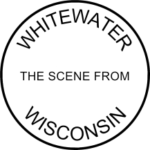 One reads that the Janesville Gazette is activating a full-site paywall (three free articles a month, day pass for a dollar, Facebook comment authorization, etc.). The stated reason is that the Gazette needs money (“Digital advertising and marketing don’t generate enough revenue to cover the expenses of our local journalism”).
One reads that the Janesville Gazette is activating a full-site paywall (three free articles a month, day pass for a dollar, Facebook comment authorization, etc.). The stated reason is that the Gazette needs money (“Digital advertising and marketing don’t generate enough revenue to cover the expenses of our local journalism”).
A few observations:
1. Private Enterprise. The Gazette‘s a private concern, and a private concern can set fees and limitations of this kind. My interest here is to write about whether this change makes any sense; one writes about this the way one writes about other legitimate but misguided efforts.
2. The Three-Article-Per-Month Limit. Odd, very odd, to price the Gazette so high. Ordinarily, one would pick the median articles per month, and set the paywall above that number. (See, for example, how The Atlantic is doing just that beginning next year.)
Setting the paywall limit at the median makes sense – half of one’s readers aren’t affected; the other half (the more motivated ones at the top of the readership scale) are the ones who are more likely to subscribe, anyway.
That simply can’t be the approach here, because if the Gazette‘s median readership is three articles a month, the paper’s on its last legs anyway.
Far more likely is that the Gazette has priced the paper even below the median, meaning they expect far more than half of their readers to be subscription prospects. That’s simply nutty: the Gazette‘s unrealistic to expect a greater percentage of prospects than half their existing digital readers.
(Again, the only other explanation would be if they have very few digital readers, so they expect more than half of a very small – presumably motivated – number.)
Either they’re worse off than anyone understands, or they’ve worse in understanding than anyone’s so far imagined.
3. Paywall Priorities. A paywall that kicks in quickly will force readers either to subscribe or select very carefully. Among those who select carefully, there’s likely to be a priority for the attention-grabbing & sensational. Crime, scandal, etc. will take priority over stories about hobbies and clubs.
Press releases – from Whitewater or elsewhere – will fall at the bottom of a non-subscriber’s priority list. Flacks from local government, school districts, colleges, or clubs can forget about non-subscribers wasting their three articles per month on press releases.
Throwing those press releases to the wind would probably get more readers than expecting non-subscribers to read them.
4. FOMO. One of the reasons one looks at a story is for what it says, and to know what others are reading. So sometimes one reads for fear of missing out. If, however, potential readers conclude that few people are subscribers anyway, and that what’s behind the paywall doesn’t get much notice, they won’t bother to look at what’s behind the paywall, either. They won’t feel that they’re missing out.
5. The Sensational. One way to entice people to pay to read stories is to make them increasingly sensational (“Extraterrestrials Abduct Janesville City Manager, Ask Him What the Hell’s Wrong with City’s Streets”).
But the sensational – about actual crimes, controversies – brings the risk of the defamatory. There’s an increased risk of liability if the paper isn’t thoroughly reviewing hard-hitting, attention-seeking stories about real events.
6. Demographics. A paywall like this will affect those who care more about the Janesville Gazette – those in, naturally, Janesville. That’s of course by design. The change will have less impact in peripheral areas that care less.
In those peripheral areas, there’s an opportunity for other publications to erode whatever readership the Gazette has.
Area competitors to the Gazette must be thrilled right now.
Tomorrow: Midnight (Part 2 of a Series).
